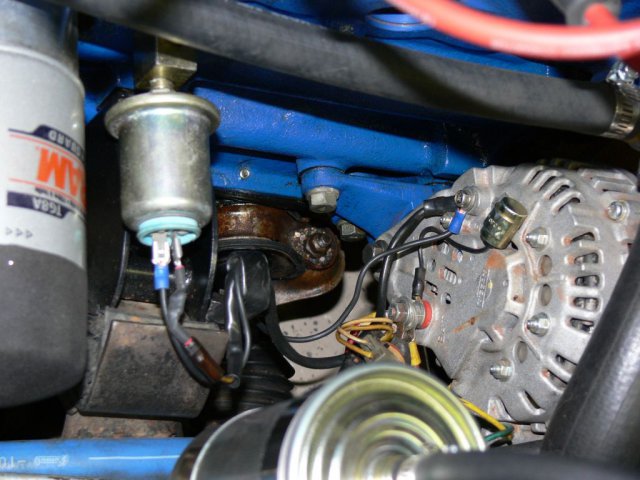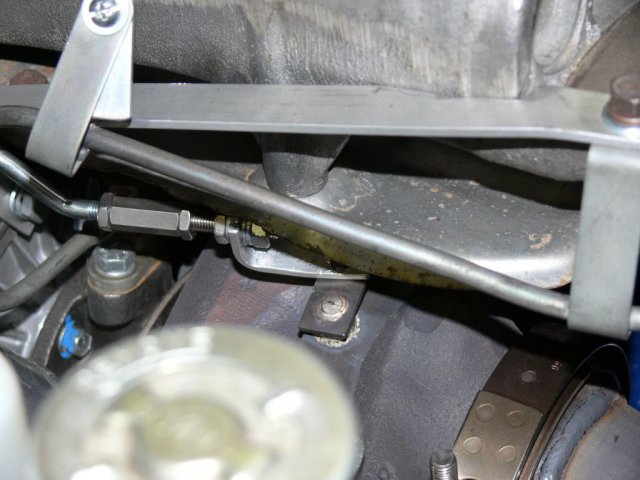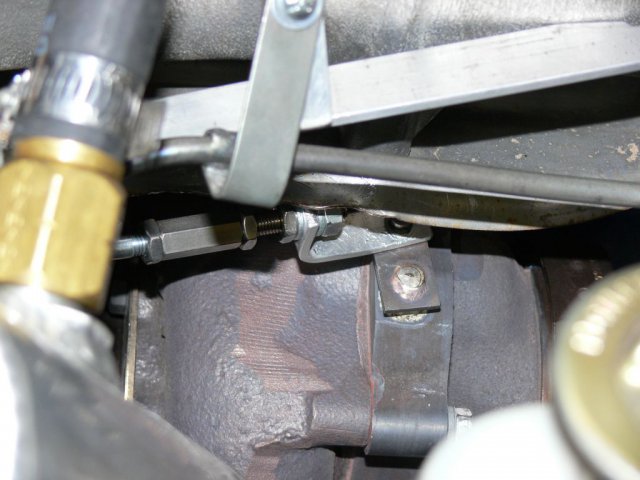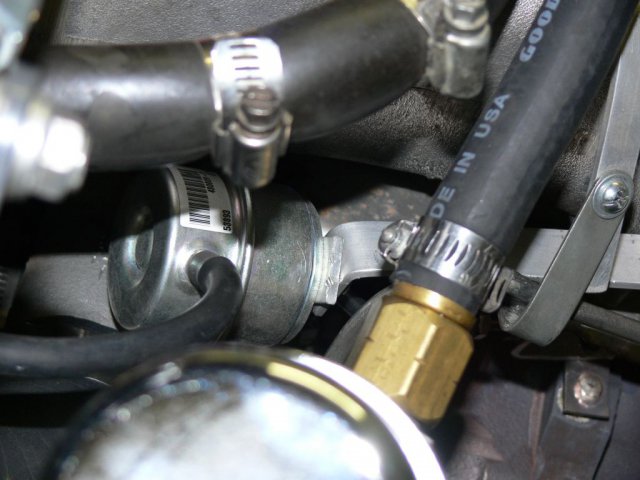-
Posts
1568 -
Joined
-
Last visited
-
Days Won
1
Content Type
Profiles
Forums
Blogs
Events
Gallery
Downloads
Store
Everything posted by Zmanco
-
For those of you with S30 cars, you should know that the stock oil pressure gauge can often be inaccurate. While tracking down an oil pressure issue I temporarily attached a mechanical gauge and found that the stock gauge was wildly inaccurate. The pressure read much higher than it really was across the rev range. I only had 50 psi max, even at 7k rpm even though the gauge was reading 80 psi. After solving the oil pressure issue I looked at installing an aftermarket gauge and sender, but I like keeping things as stock as possible in the cabin, so didn't want to go that route. I already had a sending unit from an '80 280zx that came with an engine I had bought so decided to try it. The main difference is that the newer sending unit has 2 connectors - instead of relying on the case connecting it to the block it has a separate connector for ground. So I installed the new sender and made a simple 2" adapter wire between the bullet connector on the car's harness and the spade lug on the sender and ran a separate wire from the other connector to the case of the alternator. This worked pretty well, but the gauge was still reading a little high across the rpm range. After some trial and error, I found that 3 ohms of resistance between the sender and the harness got me close enough to the mechanical gauge. So I picked up a pack of 10 ohm 1/2 watt resistors at Radio Shack and fabbed a 2" adapter cable with 3 of them in parallel. The result is that I still have the stock gauge in the cabin and it's accurate within 5 psi across the rev range. Plus I didn't have to cut the stock harness. If you're running your engine above 5k rpm regularly, I'd strongly suggest verifying that the gauge is accurate and there's enough oil pressure.
-
IIRC the N42 and N47 have the same shape and size combustion chambers, so I'd be surprised if you could notice any significant differences with fuel economy or power, unless one of them was modified. And improving flow on a head to improve power is likely to improve fuel economy as well. You might want to try to remember if other things were changed as well.
-
Be very careful about T3/TX hybrid turbos and the MSA downpipe. The factory 280ZX T3 turbo used a unique internal wastegate and the MSA pipe will only bolt to it. I bought a Garrett T3/T4 thinking I'd just swap over a factory T3 wastegate but they don't fit (although they are close enough to look like they would fit in pictures). In the end I had to buy a new external wastegate and fab a custom downpipe. This one "little thing" caused me to blow out my budget by around $700. Of course, the new waste gate is larger and I now have a full 3" exhaust all the way back, so it was a good improvement, but frustrating to have to spend so much that wasn't planned.
-
I can't tell from your question if you are looking for advice if you should change from a T3, but if you are, then I'd suggest starting out by setting a HP target. From there you can calculate the max airflow and PR (pressure ratio) and look at the compressor maps for various turbos to see how well they perform at that those flows. Also, it will tell you how big your injectors need to be, and how big of a fuel pump you need. It also let's you properly size your intercooler piping (assuming you're going to add one). Corky Bell's book Maximum Boost will walk you through all the calculations - it's really not hard to do. But basically everything starts with your HP target! It's hard to answer questions about alternate turbos without knowing it.
-
Most fuel injection systems interpret a WOT during cranking as a flooded engine and stop injecting fuel until the engine starts. I'll leave it to others who know the specifics of Ford FI to suggest where you should start.
-

Top End Performance Turbo Engine Rebuild Kit?
Zmanco replied to nash542001's topic in Miscellaneous Tech
With regard to your question about cams, there seems to be 4 lines of thought: 1) Use the stock turbo cam and turn up the boost 2) Use one of the early NA cams (search for more details) 3) Use an aftermarket such as Schneider (also sold by MSA) 4) Regrind - Delta Cams is good, but I wasn't impressed with the profiles they had for a turbo. Some have used Isky to regrind and had excellent results - again, search for more details. -
The actuator might, but the bracket won't. I just went through this with my Garrett T3/T4 which looked a lot like Juan's. The issue is that the lever for the wastegate is so close to the bottom of the intake manifold that the WG actuator cannot be mounted on top to line up with the lever. In the end I used this one: http://www.atpturbo.com/mm5/merchant.mvc?Screen=PROD&Store_Code=tp&Product_Code=ATP-WGT-019&Category_Code=WGT You'll need one that has the bent arm. I also had to bend the end piece that slips over the WG lever, but it broke off (hardened?) so I fabbed a piece of aluminum in place of it. I don't think the soft Al will last long, but after several thousand miles it's holding up so far.
-
I would NOT say "I liked them". Rather, they were adequate for a street driven car where everything was stock. I ran them on an L28 because the original SUs had worn throttle shafts and were impossible to tune with that much air leaking around them and the DGVs were $100. I suspect that for many people, that was the main advantage/lure of the DGVs - it was easier to find a set in decent mechanical condition than SUs. I had no problems tuning them and they were equivalent to the SUs with the stock engine. I wouldn't recommend anyone go out looking for them, but if they are what you have, and you're going to leave the engine stock for now, then a simple rebuild will probably solve your issues with them. FYI, I ran them with an N42 head and didn't have any issues with timing - not sure what you're referring to. I think you need to think about what your goals and budget are for the engine first. If you just want to get it so that it's reliable and fun to drive, and don't want to spend more than a few hundred dollars, then fix up the DGVs, put them on the F54/P79 engine and drive it. Megasquirt is a great solution and offers far more potential, but even doing it on the cheap, it will be several hundred dollars just for parts, depending on what you already have and their condition. But once you get it sorted, if you plan to build from there for more power, MS will be able to handle that easily while the DGVs will not.
-

Top End Performance Turbo Engine Rebuild Kit?
Zmanco replied to nash542001's topic in Miscellaneous Tech
With a rebuilt L28et and 17psi from an upgraded turbo, cam and decent intercooler you should be able to get more than 350 rwhp and into the 11's. You didn't say anything about upgrading your driveline, but that needs to be part of your plan as well. I don't think the stock diff, half-shafts and stub axles are going to last very long doing 11's. Getting into the 9's with an L6 as Prox said is a whole 'nuther story. -

Top End Performance Turbo Engine Rebuild Kit?
Zmanco replied to nash542001's topic in Miscellaneous Tech
Maybe you want to re-ask your question as "Given I have the following L28 turbo setup, what's the best way to beat my friend's Camaro?" Tell us more about both cars and I think you'll get some good feedback. To your original question, I had considered buying a strut brace from them, but after reading about too many issues with their service decided not to. -
Your question has been discussed many times - I'd suggest spending an hour searching and you will find some very good discussions about mixing/matching heads, blocks, pistons, and cams. This one http://forums.hybridz.org/showthread.php?t=156953 is recent and filled with good stuff. There is a strong case to be made that putting an N42 or N47 head on an N42 block with dished pistons, a mild cam and decent intake and exhaust (nothing too exotic - well-sorted SUs are fine) and you'll have a very fun motor that is cheap to build and also reliable and reasonably economical. Once you go much farther the law of diminishing returns begins to take over quickly with NA L engines and turbo or engine swap becomes the next step.
-

Would need your opinion on this setup
Zmanco replied to jcote75's topic in Brakes, Wheels, Suspension and Chassis
I realize that we all want our cars to have a look that we like. But at some point performance should come into the discussion, no? Choosing tires primarily based on how they look is very likely to miss in the performance department. If you're at all serious about performance, I think you're going to find that you need to leave the 15" world behind and move to 16". There just aren't very many choices left in the proper sizes of 205/60-15 and 225/55-15. Search on these sizes at tirerack.com and see how little you find. And this is less than last year, so the trend is not good. I'd suggest that before you go too much further setting the suspension up with 15's that you make the switch to 16". -
I think what you do next has a lot to do with your plans for this engine. As Xnke says, you might just need to do one valve seat. But "while you're at it", you might as well do all. Plus, I wonder if the valve guide is ok for that bent valve. And then "while you're at it", what about the rest? Valve guides seem to be one of the first things to wear on our L engines. And you should change the valve seals too "while you're at it". If this is just a motor to keep running and you're going to do something else soon, perhaps you should just put a new valve in and call it done? "While you're at it" can quickly add up to a complete head rebuild for a few hundred dollars. But if you're going to keep this engine for a while, probably worth it as you've already got the head off.
-
josh817, I'm glad that worked out for you, but I made this mistake the first time I rebuilt an L6 and tried to resolve it the way you describe. In my case I couldn't rotate the dizzy enough to get the proper timing so had to drop the front anti roll bar and oil pump and do it the right way.
-
Have you tried rotating the engine and watching the valves for cylinder 6? Are they moving properly? Perhaps one of them is stuck open? Although I doubt this is the issue, if the valves appear to be moving properly for 6, check the valve clearances. Have you double checked that you have the compression tester properly screwed into the #6 spark plug hole? Did you hear any unusual sounds for #6 when cranking? I'd look at all the simple/easy stuff before I spent the money on a pressure test. I once had coolant mixing in with the oil and only the pressure test could find the pinhole casting defect near a valve spring base. For the symptoms you describe I expect you'll find something else more obvious.
-
The Fellpro gaskets say "no retorque" right on them so I've never done this. Just curious, I have a few thousand miles on my new motor (with Felpro) and have so far not gone above 8 psi boost, although I plan to soon. Is it too late to retorque the bolts?
-
If you have a Radio Shack nearby, try there first. Last one I bought was about $5 while the local autozone wanted about double that.
-

A few EZ-wiring questions (72' 240)
Zmanco replied to Kris.Is.Awesome's topic in Ignition and Electrical
Why can't it be moved? The only thing I can think of is that it needs to be somewhere where it can get warm without causing problems. BTW, are you running with points, or are you switching to an electronic ignition? Only points need the resistor. If you switch to an electronic ignition, you can remove it. -

Pre fabbed flexible radiator ducts
Zmanco replied to JMortensen's topic in Windtunnel Test Results and Analysis
What about an oil cooler and/or intercooler? The hoses and brackets would be in the way. Still, it probably doesn't have to be air tight, so maybe making your own from scratch with reinforced slits to fit around hoses etc. might be the way to go. -

What's a good distributor upgrade/swap?
Zmanco replied to BluDestiny's topic in Ignition and Electrical
At 8k rpm on an L6 there is only 2.5 ms available for each complete ignition cycle (charge + discharge coil). Have you looked at other methods such as EDIS? -

What's a good distributor upgrade/swap?
Zmanco replied to BluDestiny's topic in Ignition and Electrical
What are your plans for other engine mods? This comment sounds like you have ambitious plans for the engine in which case you should probably skip those options and go straight to something like EDIS. I doubt the Crane is rated to 8k and am pretty sure the pertronix is not. At 8k rpm there isn't enough time to fully charge a typical coil if it's driving all 6 plugs. Is this with stock points? Quite possible they are starting to float. I rode with a friend who has a 260z with a nice cam and triple webers but stock points which acted as a rev limiter every time he would get near 6k rpm. -

Importance of a tires age.
Zmanco replied to BRAAP's topic in Brakes, Wheels, Suspension and Chassis
Disclaimer: I am not a tire engineer. It seems that the main factors (besides wear from driving) that affect tires are exposure to UV light and Ozone. In your case it sounds like they were indoors for most of the time so probably not much UV exposure. But ozone is probably an issue given you live in the Bay area. But is it enough that you throw away what are otherwise unused tires? I'd have a hard time doing that. I think I'd drive them on the street at sane speeds for a while and then look really closely for any signs of cracking, separation, etc (really focus on the sidewalls and where the tread joins it) and take it from there. -

A few EZ-wiring questions (72' 240)
Zmanco replied to Kris.Is.Awesome's topic in Ignition and Electrical
Here's a wiring diagram that should answer your questions. 72_240z_wiring.pdf -
FYI, here's a thread I started shortly after I finished my original install: http://forums.hybridz.org/showthread.php?t=122277 Each version of MS is its own world and switching from one to another can cause you to start to over with tuning. So it's most efficient if you can start with the one that best fits your needs. I'm a huge fan of MS 2/Extra, but if you're doing fuel-only, and not using it to control idle, MS 2 works well too.
-
I think you're missing the bigger picture: based on the engine constants and variables such as MAT and MAP and target AFR, MS can calculate how much fuel is required for a given combustion cycle assuming the cylinder is filled to atmospheric pressure. However, an engine is an imperfect air pump so will usually not fill the cylinder with 100% of the air it could hold (to keep this simple I'm ignoring forced induction and only discussing NA). At part throttle it's less efficient than WOT. That's where the VE table comes in. Think of it as a scaling factor that tells MS that at a particular MAP and rpm that the engine can only "pull in" so much air. The VE table is the main thing you tune. In a perfect world, once tuned, the VE table would result in the exhaust hitting the target AFR all the time. In the real world there are other factors that affect the combustion process that MS cannot control. With a wideband O2 sensor, MS looks at measured AFR, compares it to the target AFR, and adjusts the PW to get closer. Depending on which version of MS you run, there are different algorithms it follows. The O2 correction is useful for making small corrections, but it is NOT a substitute for a properly tuned engine. Hence it's important to tune the engine (mostly with the VE tables) to get pretty close and only rely on the O2 correction for small errors. One more thing: in terms of how you would tune a new MS install, it's easiest if you can find someone with a similar engine build and use their tables as a start. From there go drive while datalogging, and then use MegaLogViewer (MLV). MLV will look at the datalogs, compare them to the target AFRs, and make changes to the VE table. Before accepting them you need to review them and make sure they follow the rules of common sense. If they don't, that's usually a clue something else isn't set right. All of this is discussed in more detail on the MS site and I really encourage you to spend a few days there reading. MS can seem overwhelming at first, but as you begin to understand the theory and get used to the new vocabulary, it actually becomes rather simple. But you can't spend too much time reading! This isn't one of those types of projects where you study a little, then jump in and do the install, and then figure the rest out by trial and error. That approach usually ends in frustration.





